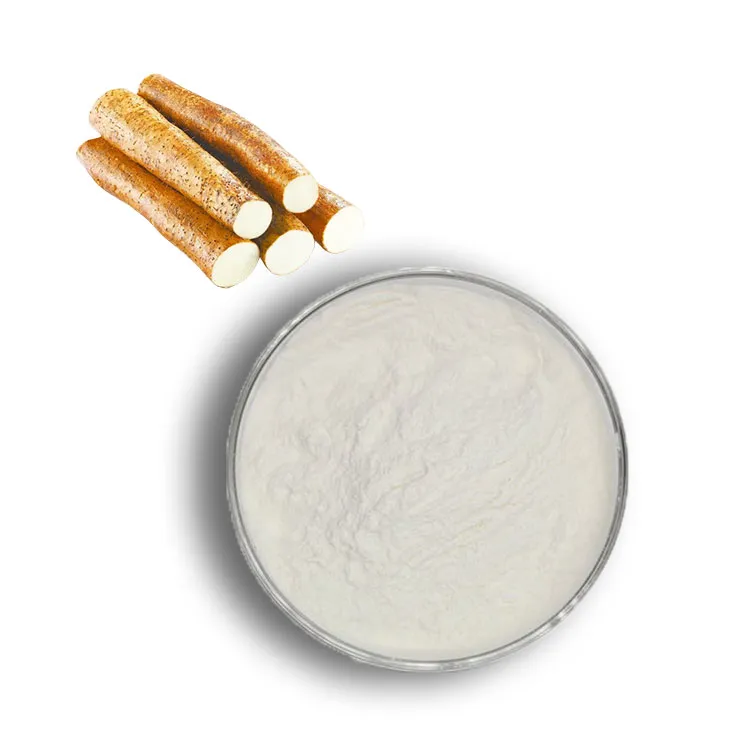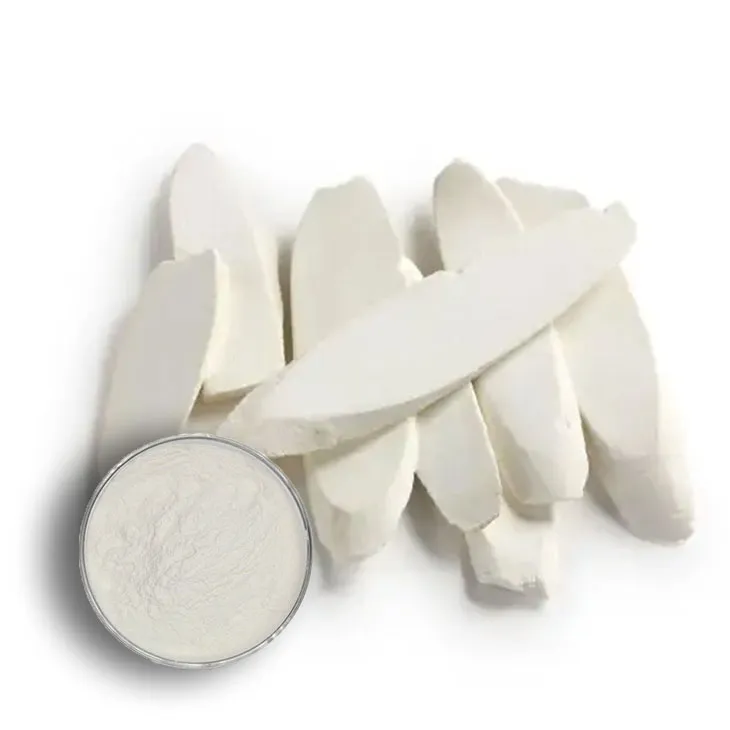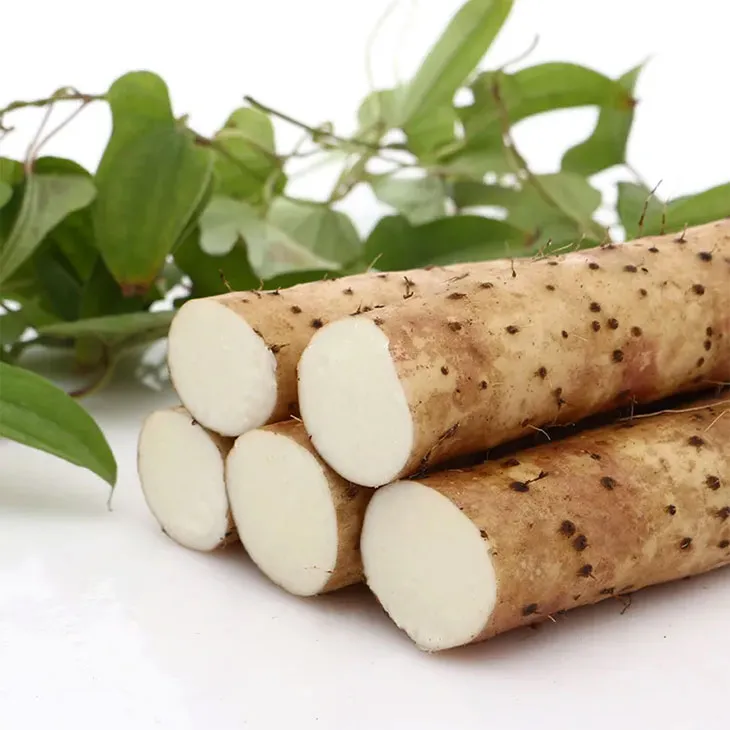- 0086-571-85302990
- sales@greenskybio.com
Extraction technology and production process of yam extract.
2024-11-28

1. Introduction
Yams are tuberous root vegetables that are rich in various valuable components such as polysaccharides, proteins, and bioactive compounds. Yam Extract has a wide range of applications in the fields of food, medicine, and cosmetics. The extraction technology and production process play a crucial role in obtaining high - quality Yam Extract.

2. Solvent Extraction
2.1 Raw Material Preparation
- First, select high - quality yams. The yams should be fresh, free from diseases and pests, and have a relatively large size.
- Wash the yams thoroughly to remove dirt, soil, and other impurities on the surface.
- Peel the yams. The peeled yams are then cut into small pieces or slices to increase the surface area for extraction.
2.2 Extraction Steps
- Choose an appropriate solvent. Commonly used solvents include water, ethanol, and methanol. For example, if water is used as the solvent, a certain proportion of water is added to the cut yam pieces. The ratio of yam to water can be adjusted according to the specific requirements, such as 1:5 or 1:10.
- Then, the mixture is placed in an extraction device, such as a Soxhlet extractor. Heat the mixture to a certain temperature. For water extraction, the temperature can be around 50 - 100 °C. The heating process promotes the dissolution of the active components in the yam into the solvent.
- Keep the extraction process for a certain period of time. This time can range from several hours to tens of hours depending on the nature of the components to be extracted and the extraction efficiency. For example, when extracting polysaccharides, it may take about 6 - 10 hours.
2.3 Purification
- After the extraction, the resulting solution contains not only the desired Yam Extract but also some impurities. Filtration is a common purification method. Filter papers or filters with different pore sizes can be used to remove large - particle impurities such as yam residues.
- Centrifugation can also be applied. By spinning the solution at a high speed, the insoluble substances can be separated from the supernatant containing the yam extract.
- If further purification is required, techniques such as chromatography can be used. For example, ion - exchange chromatography can be used to separate different charged components in the yam extract, thereby purifying the target components.
2.4 Concentration
- Evaporation is a commonly used concentration method. The purified yam extract solution is heated under reduced pressure or normal pressure to evaporate the solvent. For example, in the case of water - based yam extract, the water is gradually evaporated, and the concentration of the active components in the solution increases.
- Another method is freeze - drying. The yam extract solution is frozen first, and then the frozen water is directly sublimated under vacuum conditions. This method can better preserve the activity of the components in the yam extract and is suitable for some heat - sensitive components.

3. Supercritical Fluid Extraction
3.1 Raw Material Preparation
- Similar to solvent extraction, high - quality yams are selected, washed, and peeled. Then, they are cut into appropriate sizes, usually smaller pieces to ensure better contact with the supercritical fluid.
3.2 Extraction Steps
- The most commonly used supercritical fluid in yam extract extraction is carbon dioxide (CO₂). First, the carbon dioxide is pressurized and heated to reach its supercritical state. The supercritical carbon dioxide has the properties of both gas and liquid, which can penetrate into the yam tissue more effectively.
- The cut yam pieces are placed in the supercritical fluid extraction device. The supercritical carbon dioxide is passed through the yam samples at a certain flow rate. The extraction process is carried out under specific pressure and temperature conditions. For example, the pressure can be in the range of 10 - 50 MPa, and the temperature can be around 30 - 60 °C.
- The extraction time also needs to be controlled. Generally, it can range from 1 - 5 hours depending on the extraction requirements.
3.3 Purification
- After the supercritical fluid extraction, the extract may contain some impurities. One purification method is to use adsorbents. For example, activated carbon can be used to adsorb some impurities with strong adsorption capacity.
- Separation by changing the pressure and temperature conditions of the supercritical fluid can also be carried out. By reducing the pressure or changing the temperature, the solubility of the components in the supercritical fluid changes, and the components can be separated from the supercritical fluid.
3.4 Concentration
- For the supercritical fluid extraction product, if further concentration is required, methods such as evaporation can be used. After separating the supercritical fluid from the extract, the remaining extract solution can be evaporated to increase the concentration of the active components.

4. Impact on Quality and Applications
4.1 Quality
- Solvent extraction: If not properly purified, solvent residues may remain in the yam extract, which may affect the safety and quality of the extract. However, if the process is well - controlled, it can effectively extract a variety of components.
- Supercritical fluid extraction: Since carbon dioxide is a non - toxic, non - flammable gas, and can be completely removed from the extract, the resulting yam extract has high purity and is relatively safe. However, the equipment for supercritical fluid extraction is more expensive, and the operation requirements are relatively high.
4.2 Applications
- Food industry: Yam extract can be used as a natural additive in food, such as in the production of functional foods. High - quality yam extract can enhance the nutritional value and flavor of food products. For example, yam polysaccharides can be used as a thickener or stabilizer in food.
- Medicine field: Some bioactive components in yam extract have pharmacological effects. For example, certain compounds may have antioxidant, anti - inflammatory, or immunomodulatory functions. Yam extract can be used in the development of drugs or health products.
- Cosmetics industry: Yam extract is rich in nutrients that are beneficial to the skin, such as vitamins and polysaccharides. It can be used in skin care products to moisturize, nourish, and improve skin elasticity.

5. Conclusion
In conclusion, the extraction technology and production process of yam extract are diverse. Solvent extraction and supercritical fluid extraction are two important methods, each with its own characteristics. Proper selection of extraction methods and strict control of production processes are crucial for obtaining high - quality yam extract with wide applications in various fields.
FAQ:
Question 1: What are the main advantages of solvent extraction in yam extract production?
Solvent extraction has several advantages in yam extract production. It is a relatively simple and cost - effective method. Different solvents can be selected based on the solubility of the target components in yams. For example, some polar solvents are good at extracting polar compounds from yams. It can achieve a relatively high extraction yield in a relatively short time. However, the disadvantage is that it may leave some solvent residues if not properly removed during the subsequent purification steps.
Question 2: How does supercritical fluid extraction work in extracting yam extract?
Supercritical fluid extraction uses a supercritical fluid, usually carbon dioxide. The supercritical state of carbon dioxide has properties between a gas and a liquid. It has high diffusivity and low viscosity, which allows it to penetrate the yam matrix easily. The extraction is carried out by adjusting the pressure and temperature to control the solubility of the target components in the supercritical fluid. When the supercritical fluid is depressurized, the extracted components are separated out. This method is considered more green" as it often leaves no or very little residue compared to solvent extraction.
Question 3: What is the importance of raw material preparation in the production process of yam extract?
Raw material preparation is crucial in the production of yam extract. Firstly, it helps to ensure the quality and purity of the starting material. Cleaning the yams removes dirt, debris, and possible contaminants. Drying the yams at the appropriate temperature and humidity helps to preserve the active components. Grinding the yams into an appropriate particle size is also important as it affects the surface area available for extraction. A larger surface area can enhance the extraction efficiency by allowing better contact between the yam material and the extraction medium.
Question 4: How is purification carried out in the production of yam extract?
Purification in yam extract production typically involves several methods. One common method is filtration, which can remove large particles and insoluble impurities. Chromatography techniques may also be used, such as column chromatography, to separate different components based on their chemical properties. In some cases, crystallization can be used to purify specific compounds. The choice of purification method depends on the nature of the target components and the desired purity of the final yam extract.
Question 5: What factors can affect the concentration process of yam extract?
Several factors can affect the concentration process of yam extract. Temperature is an important factor. Higher temperatures can accelerate the evaporation of the solvent (if solvent - based extraction is used), but excessive heat may also cause degradation of some heat - sensitive components. Pressure also plays a role in some concentration methods, such as vacuum concentration. The initial composition of the extract, including the amount and type of solutes, can influence the efficiency of concentration. Additionally, the equipment used for concentration, such as the type of evaporator, can also impact the final concentration result.
Related literature
- "Advanced Extraction Technologies for Yam - Based Bioactive Compounds"
- "Optimization of Yam Extract Production: A Review of Extraction and Purification Processes"
- "The Role of Supercritical Fluid Extraction in High - Quality Yam Extract Production"
- ▶ Hesperidin
- ▶ citrus bioflavonoids
- ▶ plant extract
- ▶ lycopene
- ▶ Diosmin
- ▶ Grape seed extract
- ▶ Sea buckthorn Juice Powder
- ▶ Beetroot powder
- ▶ Hops Extract
- ▶ Artichoke Extract
- ▶ Reishi mushroom extract
- ▶ Astaxanthin
- ▶ Green Tea Extract
- ▶ Curcumin Extract
- ▶ Horse Chestnut Extract
- ▶ Other Problems
- ▶ Boswellia Serrata Extract
- ▶ Resveratrol Extract
- ▶ Marigold Extract
- ▶ Grape Leaf Extract
- ▶ blog3
- ▶ blog4
-
Nature's best vitamin D3.
2024-11-28
-
The best velvet antlers in 2024.
2024-11-28
-
Phyllanthus Emblica Extract
2024-11-28
-
Bamboo Leaf extract
2024-11-28
-
Europen Bilberry Extract
2024-11-28
-
Quercetin
2024-11-28
-
Shikone Extract
2024-11-28
-
Sophora Japonica Flower Extract
2024-11-28
-
Plantain extract
2024-11-28
-
Bilberry Extract
2024-11-28
-
Green Tea Extract
2024-11-28
-
Saffron Extract Powder
2024-11-28





















